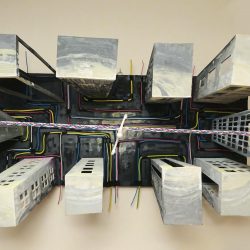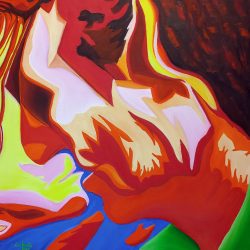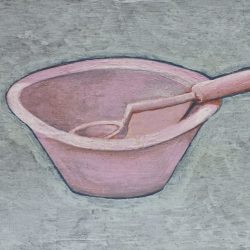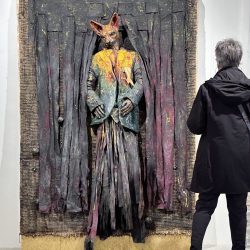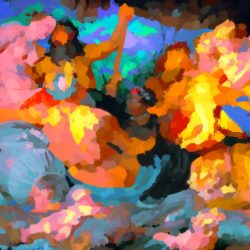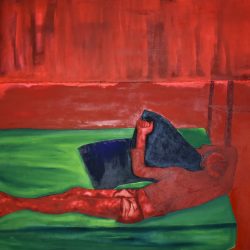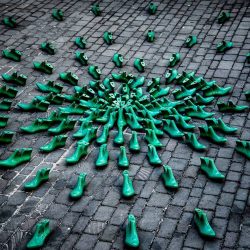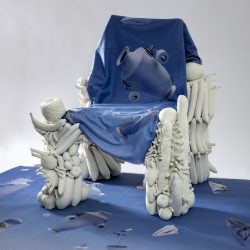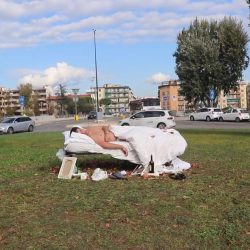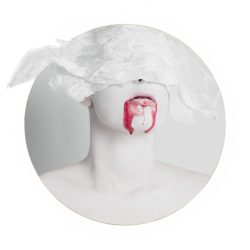work
Filosofia dell’avvenire
| category | Installation |
| subject | Political / Social, Nature, Human figure |
| tags | stoppa, archeologia, disegno, scultura, tela, china |
| base | 220 cm |
| height | 280 cm |
| depth | 200 cm |
| year | 2019 |
The installation "Philosophy of the future" stages three canvases of cm. 330x33 on which, as in an
archaeological excavation, bones, shards, anthropomorphic elements are stratified and dispersed in the
upper part of the composition.
The three elements start from the top to rest on the floor on which a canopy is poured from which small
three-dimensional figures emerge.
The underlying question is: Who are we today? What is this "today" in which we live?
"(...) What emerges from the imaginary excavation in Anna Crescenzi's latest works is an era deeply
marked by the overbearing advance of man, beyond unimaginable borders, capable of breaking the
common sense of things, of transcending the limits of knowable, to reduce, if not cancel, the barriers of
the universe.A trauma, which forms the backdrop to his latest research, of an archeology of screams,
marked by impotence and loneliness.(...)
From the text by Michelangelo Giovinale, presentation in the catalog Prossima alle radici (Ed. Gutenberg
2020)
archaeological excavation, bones, shards, anthropomorphic elements are stratified and dispersed in the
upper part of the composition.
The three elements start from the top to rest on the floor on which a canopy is poured from which small
three-dimensional figures emerge.
The underlying question is: Who are we today? What is this "today" in which we live?
"(...) What emerges from the imaginary excavation in Anna Crescenzi's latest works is an era deeply
marked by the overbearing advance of man, beyond unimaginable borders, capable of breaking the
common sense of things, of transcending the limits of knowable, to reduce, if not cancel, the barriers of
the universe.A trauma, which forms the backdrop to his latest research, of an archeology of screams,
marked by impotence and loneliness.(...)
From the text by Michelangelo Giovinale, presentation in the catalog Prossima alle radici (Ed. Gutenberg
2020)




